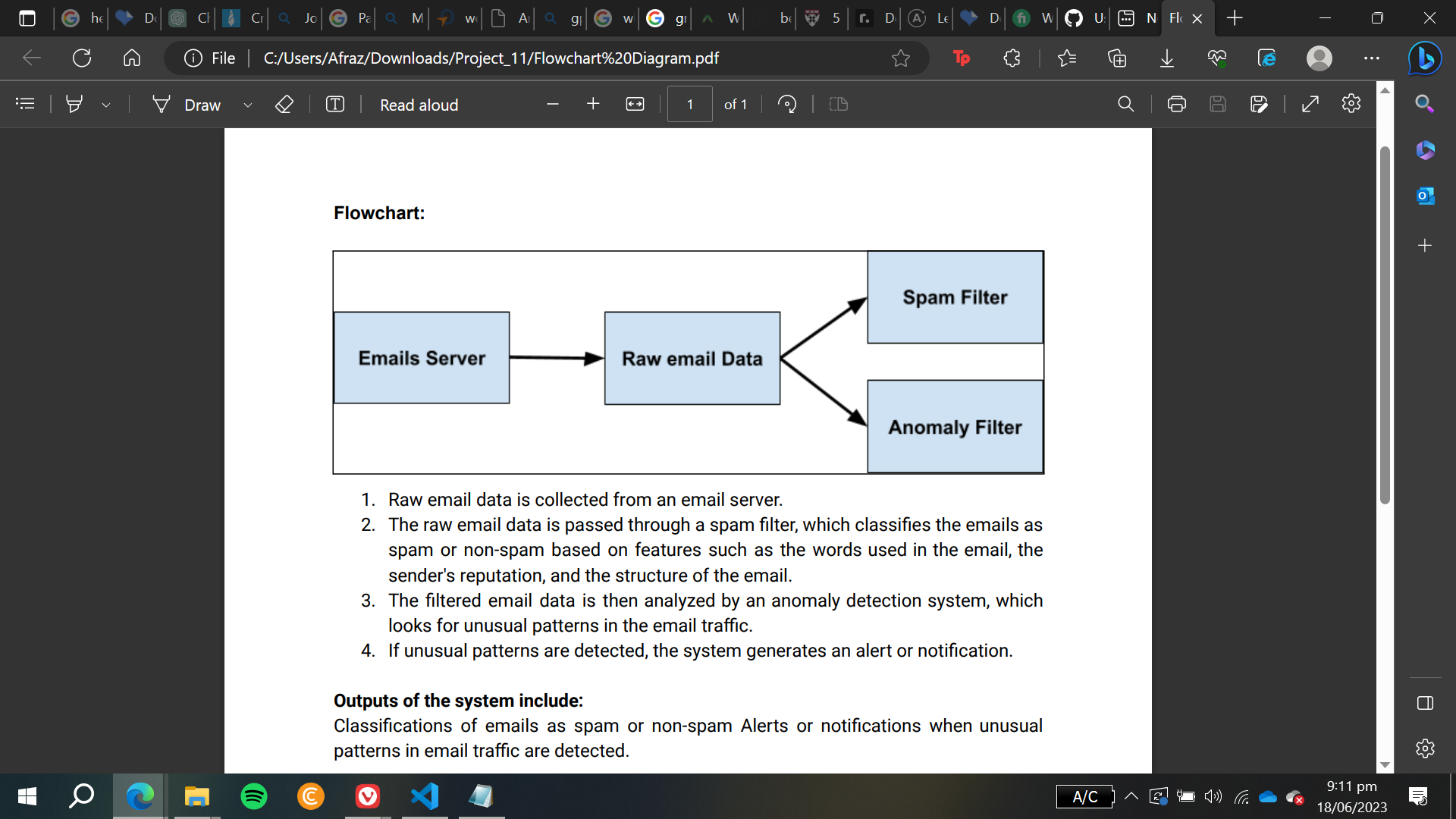Project information
- Category: Data Science
- Project URL: Github
Artificial intelligence techniques have been applied to the problem of email spam in several ways:
1. Spam filtering: AI can be used to build models that can classify emails as spam or non-spam based on features such as the words used in the email, the sender's reputation, and the structure of the email. These models can be trained on labeled data (i.e., a dataset of emails that have been manually labeled as spam or non-spam) and then used to automatically classify new incoming emails. 2. Spam detection: AI can be used to identify spam emails by detecting patterns and anomalies in email traffic. For example, machine learning algorithms can be trained to recognize unusual patterns of email sending, such as a sudden increase in the volume of emails coming from a particular sender or a high proportion of emails containing certain keywords. 3. Phishing detection: AI can be used to identify phishing emails, which are fraudulent emails that are designed to trick the recipient into giving away sensitive information such as passwords or financial details. Machine learning algorithms can be trained to recognize the characteristics of phishing emails, such as the use of unfamiliar logos or the presence of links to suspicious websites.

